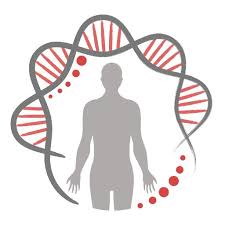W.B.C.S. Main 2018 Question Answer – Physiology – Synaptosome.
WBCS ২০১৮ মেইনস প্রশ্নের উত্তর -ফিজিওলজি – সিন্যাপটোসোম।
Our knowledge of the complex synaptic proteome and its relationship to physiological or pathological conditions is rapidly expanding. This has been greatly accelerated by the application of various evolving proteomic techniques, enabling more efficient protein resolution, more accurate protein identification, and more comprehensive characterization of proteins undergoing quantitative and qualitative changes. More recently, the combination of the classical subcellular fractionation techniques for the isolation of synaptosomes from the brain with the various proteomic analyses has facilitated this effort. This has resulted from the enrichment of many low abundant proteins comprising the fundamental structure and molecular machinery of brain neurotransmission and neuroplasticity. The analysis of various subproteomes obtained from the synapse, such as synaptic vesicles, synaptic membranes, presynaptic particles, synaptodendrosomes, and postsynaptic densities (PSD) holds great promise for improving our understanding of the temporal and spatial processes that coordinate synaptic proteins in closely related complexes under both normal and diseased states. This chapter will summarize a selection of recent studies that have drawn upon established and emerging proteomic technologies, along with fractionation techniques that are essential to the isolation and analysis of specific synaptic components, in an effort to understand the complexity and plasticity of the synapse proteome.Continue Reading W.B.C.S. Main 2018 Question Answer – Physiology – Synaptosome.
SYNAPTOSOMAL PREPARATIONS
The enrichment of synaptic fractions from homogenized brain tissue was first performed in the late 1950s (Hebb and Whittaker 1958) and validated in the 1960s, with the observation by electron microscopy that purified intact nerve endings or synaptosomes resembled synaptic structures in tissue (Gray and Whittaker 1962). The basis of all synaptosomal preparations is the initial homogenization of fresh brain tissue with a glass–Teflon homogenizer, generating shear forces that pinch off nerve terminals, which then reseal to form synaptosomes . The PSD often remains attached to the synaptosome, presumably because of the trans-synaptic protein complexes that physically link the two compartments (Gray and Whittaker 1962). A crude enrichment of synaptosomes can be achieved by centrifuging the homogenate at low speed to pellet myelin and other debris and then centrifuging the resulting supernatant at high speed to yield a microsomal P2 pellet. A purer preparation can be obtained by applying the crude synaptosomes to a Percoll gradient (Dunkley et al. 2008). Synaptosomes are amenable to both structural and functional studies of the synapse because they not only can provide sufficient material for protein biochemical experiments, but also can maintain metabolic activity and membrane potential and can be stimulated to release neurotransmitter. The synaptosome preparation also acts as a basis for further subcellular fractionation, including synaptic vesicles (Nagy et al. 1976; Huttner et al. 1983; Hell et al. 1988), the presynaptic cytomatrix, and the postsynaptic density (PSD) (Phillips et al. 2001).
In the accompanying protocol, simple centrifugation techniques are used to sequentially subfractionate rodent brain tissue and prepare both synaptosomes and synaptic vesicles (see Protocol: Subcellular Fractionation of the Brain: Preparation of Synaptosomes and Synaptic Vesicles [Evans 2014]). The resulting preparations are suitable for functional and protein biochemical studies of the synapse.
USES FOR SYNAPTOSOMAL PREPARATIONS
Synaptosome experiments were instrumental in first identifying neurotransmitters, including the proof that amino acids, such as glutamate, were indeed neurotransmitters. Typical approaches involved loading and detecting the evoked release of radioactively labeled neurotransmitters, including GABA, glutamate, acetylcholine, dopamine, and noradrenaline (Levy et al. 1973), or detecting endogenous release by high-performance liquid chromatography. Later developments led to the real-time detection of endogenous glutamate exocytosis via a fluorometric enzyme-linked assay (Nicholls et al. 1987) and synaptic vesicle endocytosis via the uptake of fluorescent styryl dyes (Marks and McMahon 1998). With the advent of pharmacological tools to manipulate ion channels and receptors, a host of experiments in synaptosomes helped define the major regulatory signaling pathways that regulate neurotransmission. For example, a large body of work has focused on how different classes of metabotropic glutamate autoreceptors regulate glutamate release via G-protein-mediated effects on phospolipases, kinases, and voltage-gated ion channels (Herrero et al. 1992; Rodriguez-Moreno et al. 1999).
In more recent years, synaptosomes prepared from knockout or knock-in mice have been used to support studies into the roles of synaptic proteins (e.g., Lonart et al. 1998; Pozzo-Miller et al. 1999; Lonart and Simsek-Duran 2006; Sumioka et al. 2011). Synaptosomes and synaptic vesicle preparations have also been subjected to proteomic and phosphoproteomic analysis (Collins et al. 2005; Schrimpf et al. 2005; Munton et al. 2006). In one landmark study, the protein and lipid components of the synaptic vesicle preparation were meticulously characterized, revealing more than 80 integral membrane proteins and more than 100 further peripheral proteins associated with the synaptic vesicle membrane (Takamori et al. 2006). These proteomic studies have, first, cataloged the incredible number of neuronal-specific proteins operating at the synapse, and, second, underlined the vast array of posttranslational modifications that these proteins are subjected to and how they change in response to synaptic activity. Dissecting the networks of synaptic protein–protein interactions and how these are regulated in health and disease is the current challenge in synaptic research and will no doubt continue to be supported by experimental approaches using the synaptosome preparation. Indeed, the most recent synaptosome literature is predominated by studies of genes that are mutated in disease and includes the preparation of synaptosomes from the postmortem brains of human patients.
Our own publications are available at our webstore (click here).
For Guidance of WBCS (Exe.) Etc. Preliminary , Main Exam and Interview, Study Mat, Mock Test, Guided by WBCS Gr A Officers , Online and Classroom, Call 9674493673, or mail us at – mailus@wbcsmadeeasy.in
Visit our you tube channel WBCSMadeEasy™ You tube Channel
Please subscribe here to get all future updates on this post/page/category/website



 Toll Free 1800 572 9282
Toll Free 1800 572 9282  mailus@wbcsmadeeasy.in
mailus@wbcsmadeeasy.in


















































































































